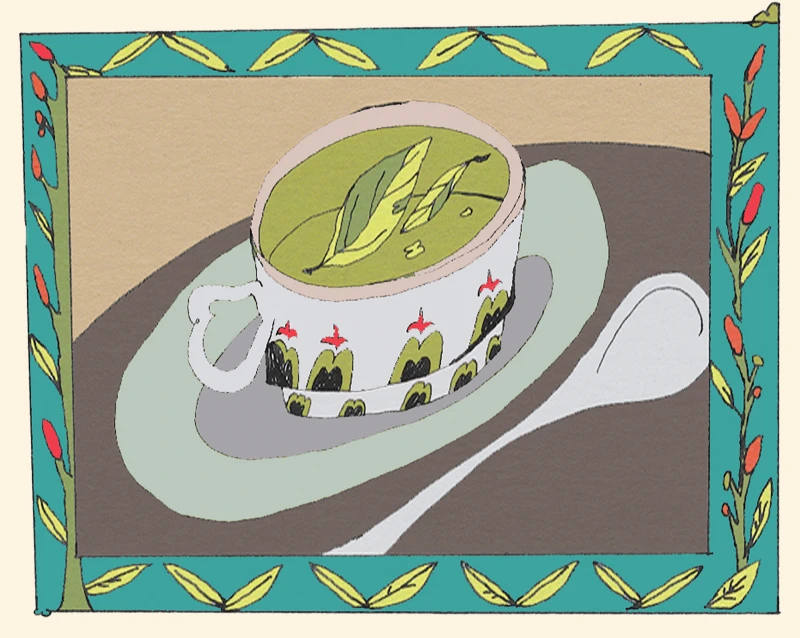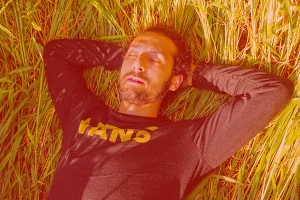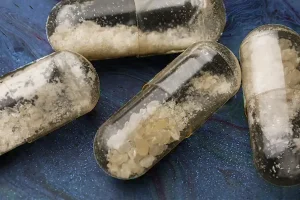Everywhere I’ve gone the last few years, I get questions about psychedelics. Even at speaking events that have nothing directly to do with them, the topic of psychedelics presents itself through raised hands and genuinely interested people. As most events I speak at are related to Integrative Medicine, I wouldn’t say these questions are off topic. Integrative Medicine is a field of medicine that incorporates both the mind and body into the treatment and prevention of disease, and psychedelics have important potential in this area. Psychedelics may very well aid overall health through a positive influence on our minds. It’s not a theory anymore that the mind interacts with our bodies physically and, undeniably, there’s a ton of investigation needed to uncover exactly how psychedelics may be useful for a more complete picture of modern health and wellness—physically, cognitively, and spiritually.
I began cultivating my expertise on psychedelics and mind-altering plants many decades ago. I received a degree in botany from Harvard in 1964, where Richard Evans Schultes—considered the father of modern ethnobotany and known for his work with entheogenic plants in Mexico and the Amazon—was my mentor. I then got an MD from Harvard Medical School in 1968. From 1971 to 1975, I traveled widely in North and South America and Africa as a fellow of the Institute of Current World Affairs, collecting information on drug use in other cultures and medicinal plants. From 1971 to 1984, I was on the research staff of the Harvard Botanical Museum and conducted investigations of medicinal and psychoactive plants. After a lifetime of working in these arenas, I’m honored to add that when my good friend of forty-plus years Paul Stamets discovered a new species of psilocybin mushroom, he named it after me, Psilocybe weilii.
READ: What is Kava? A Complete Guide

Fast forward to today, I’m happy to see the increasing interest of folks in where they can access these drugs and how to go about their own mind-expanding experiences. Having been there in the beginning days of psychedelic research and then through the era of prohibition, I can say that today’s mainstream resurgence makes a lot of sense. Society as a whole has been starved for what many believe (myself included) is a human right to consciousness-altering substances. Most, if not nearly all, of these substances have been part of civilization since before recorded history. As I’ve long advocated, I hope that the momentum toward responsible use and further research on these substances continues. This could, in fact, be one of the best things happening in society today; The more people who have positive psychedelic experiences, the more we may achieve a fundamental shift in thinking and have a chance to turn things around, for ourselves and the environment.
While I reckon there will always be people using psychedelics as “party drugs,” those who do so miss out on much of their potential and also may end up obscuring the practical applications of these substances. Most natural psychoactives actually tend to be very safe and non-toxic when used responsibly. I believe the more people who respect these substances by using them in an informed and safe way, the faster the medical field will turn course and begin looking more in-depth at what treatments can be developed through these drugs. Arguably, acceptance by modern medicine and further research are essential to re-write the taboo narratives and, importantly, to reverse the illegality of these substances.
All of that being said, there are also many non- psychedelic plants that have been unrecognized or demonized that I’d like to draw attention to for their tremendous potential. Many plants like kava, the coca leaf, and ephedra have been demonized similarly to psychedelics for decades when, in fact, they’ve been allies to humans for millennia. To this day, about a quarter of pharmaceuticals are still derived from plants. This is one of the reasons that I’ve often been heard saying “there’s no such thing as a good or bad drug.” The relationship that we have with these substances, not the substances themselves, determines whether their profound beneficial properties are realized.

I’ve been involved in efforts to help re-write the modern narrative of psychoactive and unrecognized medicinal plants for nearly my whole career. In 1979, I founded a research foundation called The Beneficial Plants Research Association. We had a remarkable advisory board including Dick Schultes, Alexander Shulgin—a chemist most known for his synthesis of MDMA, and Albert Hoffman— also a chemist, most known for his discovery of LSD. The association was set up to look at plants that have been unrecognized, neglected, or demonized by the government that could in fact offer significant benefits to the people of today’s world. Coca was one of the main ones, but we also looked at other kinds of stimulants, including kava—which was relatively unknown at the time—khat, ephedra, opium, and other traditional plant allies. As you might imagine, the association was way ahead of its time.
How to Grow Shrooms Bundle
Take Both of Our Courses and Save $90!
Our principal goals at The Beneficial Plants Research Association were focused on teaching people about lesser known plants and also generating research interests. In light of the growing mainstream curiosity in psychedelics over the past couple years, I recently decided to begin firing this association back up in order to further research psychoactives of all kinds: sedatives, psychedelics, stimulants, and so on. There’s so many beneficial effects yet to be discovered from plants and fungi, not just psychedelics—but all plant allies with a history of human usage.
A key focus of the association will be how many plants demonstrate medicinal effects when taken whole. You may be familiar colloquially with the “entourage effect,” the idea that plants and fungi contain a multitude of alkaloids that all work together synergistically. The question of the “entourage effect” has also become particularly relevant in the realm of psychedelics lately as researchers at institutions such as Johns Hopkins and New York University administer synthetic psilocybin to patients as opposed to, say, the whole psilocybin mushroom. More often the safety and beneficial effects of whole plants are superior to single extract chemical drugs. It’s time to put some serious resources there.
READ: Inside Paul Stamets’ Massive Microdosing Study

To illustrate this, a favorite example of mine is the coca leaf: In its natural form, it’s useful as a stimulant with low abuse potential and doubles as a valuable herbal medicine for treatment of many ailments including digestive troubles. Coca, of course, has been demonized due to its association with cocaine, however, cocaine is only one of more than 20 alkaloids naturally occurring in the coca leaf. Those many other alkaloids not only contribute to the more grounded stimulation from the coca leaf, but they’re also what’s responsible for making coca an effective remedy for indigestion, gastritis, ulcers, hoarseness, and other conditions. It may even protect against certain cancers, including prostate cancer. Coca leaves also contain many essential minerals and high levels of vitamins C, E, and several Bs. In its whole-leaf form, coca is undeniably a beneficial plant ally that has helped human beings, safely, for thousands of years. I enjoy using coca leaf on most days for consistent energy.
Ironically, the only legal import of coca leaves to the United States happens on behalf of Coca-Cola via a chemical company that extracts the cocaine and other alkaloids and converts the residue into a flavor that goes into their sodas. The Peruvian government would love to export more coca to the United States, if only we would allow it. In an effort to see this through, I’ve been working with Cody Swift through his organization, the Riverstyx Foundation, which funds projects centered around regeneration, reciprocity, and healing. Through Riverstyx, we’re interested in producing coca research to document the medicinal benefits of the leaves with the long-term goal of seeing its rightful decriminalization.
This is the first time in 40 years that I’ve seen any change of attitudes in the United States regarding coca, and we must appreciate how the larger conversation of psychedelics has cracked the door open. The moment is ripe for rehabilitating the attitudes toward all similarly situated “banned” plants. I urge everyone to incorporate plants like coca, ephedra, khat, opium, etc. into broad conversations around psychedelics—as well as to explore plant allies which are already legal and may bring great benefit to their lives. An example of this is matcha green tea.

I first tried matcha in Japan in 1959 when I was 17 years old and staying with a host family in Japan. I have since been back over 50 times, and have come to love matcha so much that I founded my own matcha company, matcha.com. Matcha is another example of a plant which is most beneficial when taken in its whole form, but for decades was largely unknown and, even still, is significantly less popular than coffee, even though, for many, coffee disrupts their sleep and negatively impacts their mood. I was never a coffee drinker, but most people report when switching from coffee to matcha that their mood becomes more stable, energy levels increase, and anxiety greatly lessens. I typically have two bowls per day, and some research is starting to focus on matcha powder (not just green tea) for the protection against diseases like metabolic syndrome and even possible protections against cancer.
Matcha is the only type of true tea in which the whole leaf is consumed. As such, the benefits of green tea are amplified many-fold. The body is provided a chance to fully digest and make use of a long list of unique antioxidant catechins found in it, including the well-known EGCG antioxidant. It also contains the L-theanine amino acid, which is well known to modulate the effects of caffeine. There are no jitters, or the anxiety, commonly experienced with coffee or other energy drinks.
I greatly appreciate the one-thousand year history behind matcha; The traditional craftsmen in Japan have invented some impeccable agricultural technologies which allow the tea plant to grow with amplified levels of naturally occurring L-theanine, and other healthful compounds. At matcha.com, one of our missions is to support the few remaining authentic tea families and fields left in Japan who are still producing the highest grades of matcha tea. Most other tea farms in Japan have been commercialized for lower qualities of matcha in order to suit the exponential global demand for matcha by corporations. A lesson, here, for people as they begin to explore incorporating plant allies into their lives is to take great care when investigating the source of their medicine. As the popularity of these plant allies grow, they become commodified and the quality often decreases.
Another reliable plant ally that I suggest people familiarize themselves with is kava (Piper methysticum). Although kava has not necessarily been demonized like coca or psychedelics, it is still largely unknown and neglected. Kava is the major psychoactive plant used by the Indigenous people of Oceania, in many islands throughout the Pacific. Kava powder comes from the very large root of the plant, which is in the black pepper family. Kava has unique chemistry and is usually consumed as a specially-made beverage, functioning as a social stimulant and lubricant, while also being a natural sedative and calmative. Kava has an interesting dose response curve, as it has been used traditionally, safely, as both a stimulant and a sedative. Kava is perhaps the most important natural anti-anxiety product known currently in the world, with virtually no toxicity when used in a proper manner. Kava also does not interact with alcohol as do pharmaceutical drugs for anxiety—I recommend it frequently.
It’s important we stay in touch with what plants are our allies for each stage of our lives. We also should stay cognizant of when those periods of time may come to an end. My relationship with cannabis, for example, changed dramatically over the years. I was one of the earliest public advocates of cannabis and I conducted the first-ever federal research study on it in 1968. From my twenties to early thirties, it was a source of great pleasure and creativity. As time went on, however, I noticed it stopped having positive effects and made me introverted, groggy, and sedated, with none of the pleasure I had previously experienced. Because of that, I haven’t used cannabis regularly for about 25 years, but I also haven’t stopped supporting it.
As Alan Watts famously said: “When you get the message, hang up the phone.” He said this in reference to psychedelics and the idea that a person shouldn’t continually use psychedelics to receive revelations if they haven’t yet implemented the revelations they’ve already had while under the influence, but I believe it applies to how we incorporate all types of plant allies into our lives. We should be able to reasonably use any natural product that could benefit us. In doing so, we should strive to respect them, use them intelligibly and safely, listen to how our bodies are responding, and honor how that response may change over time. This begins with access.
*This article was originally published in DoubleBlind Issue 8.

DoubleBlind is a trusted resource for news, evidence-based education, and reporting on psychedelics. We work with leading medical professionals, scientific researchers, journalists, mycologists, indigenous stewards, and cultural pioneers. Read about our editorial policy and fact-checking process here.

DoubleBlind Magazine does not encourage or condone any illegal activities, including but not limited to the use of illegal substances. We do not provide mental health, clinical, or medical services. We are not a substitute for medical, psychological, or psychiatric diagnosis, treatment, or advice. If you are in a crisis or if you or any other person may be in danger or experiencing a mental health emergency, immediately call 911 or your local emergency resources. If you are considering suicide, please call 988 to connect with the National Suicide Prevention Lifeline.



